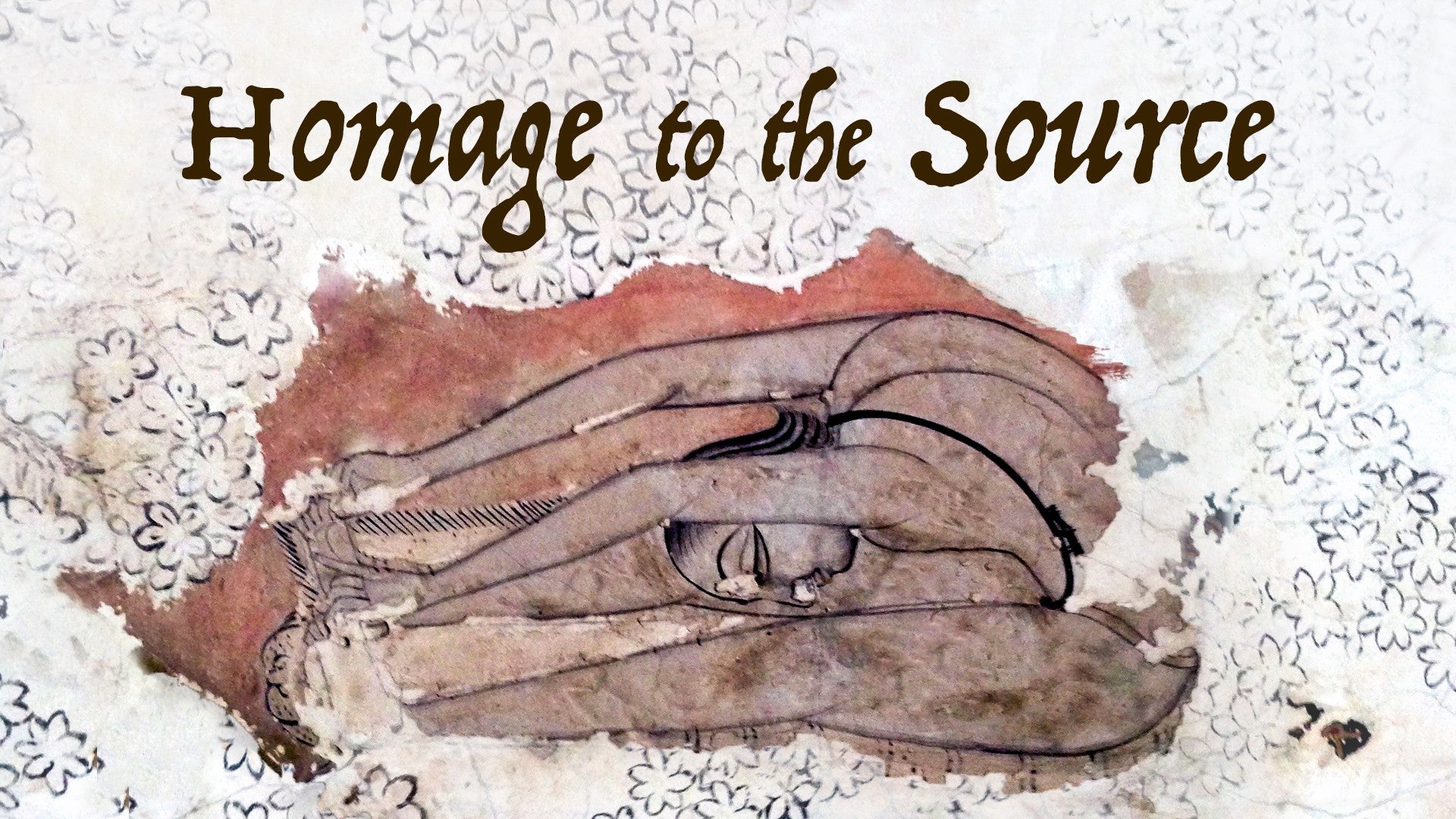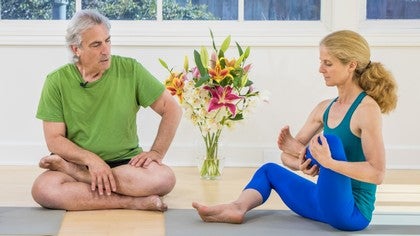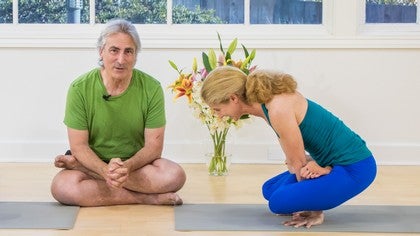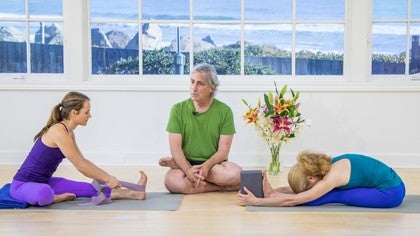Description
This most archetypal of yoga poses may once have been considered easy for practitioners well versed in sitting on the floor. In our modern culture of chairs and tight hips, Lotus Pose generally proves to be more of an aspirational posture. Richard walks us through safe sequencing toward the full asana.
About This Video
Transcript
Read Full Transcript
Hello, I'm here with my good friends Ilana and Betsy, and this pose coming up is called Padmasana, which is probably one of the most archetypal of all the Yogasana's lotus pose. But it's a pose that is not particularly easy for us Westerners to do. It's very interesting, if you look in Light on Yoga, each one of the poses has a numerical rating, and the rating goes from 1 to 60, one being the easiest pose, usually like Tadasana, 60 being the most difficult pose, and there's one pose near the back of the list that has a 60, I don't remember exactly which one. But lotus is rated like a 6 or something like that, and it's, of course, a 6 for people who don't sit in chairs all the time, who sit on the floor, and whose hips have maintained a nice opening. So for a Westerner, lotus would be rated much, much higher than a 6.
And so it's extremely important that when you work with lotus, if you do need to work with it, that you take a lot of precautions in doing the pose. It's very important that your hips be open before you even try to bring the feet into the full lotus. So you need to do a lot of warm-ups before you try lotus, and then you don't at first want to hold the pose for a really long time. You sort of get it in and then get right out again, at least at first, until you get a little bit more adept at what you're doing. Let's have the yoga knees bring the feet forward on the floor in front of the pelvis, knees bent.
And I will ask Betsy to, let's bring the left foot into part of your padmasana first, please. Now, when you do this, I'd like you to be a little bit slower about this so we can go through it more methodically. The first thing I'd like you to do is bend the knee and bring the calf into the back of the thigh, yes, and lock the knee in place. And then what I would like you to do is to bring the left foot up into the crook of the right elbow, also known as the cubital fossa. And then I would like you to rock the leg back and forth a little bit.
See how the foot is slightly sickled? Could you put through the inner foot? Yes. So rock the leg back and forth a bit and get that hip to open up. And now, when you bring the foot into place, into the crease of the hip, just swivel it across from the hip socket and bring the foot, yes, right down into the hip crease. Beautifully done.
Now, this is the same thing. Can you first lock that knee against the back of the thigh, yes. And then again, bring the leg up and very carefully swivel from the hip around and in. That's good. Keep going.
The knees want to come very close together. Beautifully done. And you can see, once again, how the feet, the soles, I should say, are perpendicular to the floor and not parallel. It's a very nicely performed exercise. Very nice.
Now, for Ilana, I think what we'll do first is try just Ardipadmasa. Now, I don't want a less flexible student, a less flexible student in the hips, that is, to do a full lotus pose, at least right at first. All I'll ask her to do is to bring her left heel to the outside of her right hip as we did in some of the previous poses. No, just slide it under the bent knee like that, all the way across to the outer hip. Now, bend this knee, lock it, and then bring that foot into the crook of the left elbow.
Rock it back. No, no, no. I'd like you to actually bring the foot into the crook of the elbow. Can you do that? Yeah.
And push through the inner foot a little bit more here. Lengthen here. That's right. And rock back and forth. Very good.
Now, again, can you get that knee a little bit more compressed and then swivel from the hip and bring the edge of the foot into the hip crease? Very good. Now, this position here is more of a more adept beginning student, let's say, a beginning lotus student. You don't particularly want a raw beginner to do lotus position. I think probably best for them would be just to have the legs or the shins cross in front of the pelvis.
But this is well done, and it doesn't look like it's going to cause any major problems. So let's come out, and to do that, I want you to be sure that you slide this foot off carefully first. Yes. See? Okay.
And then pick that knee up. No, no, you can stretch this leg out and then pick that knee up and reach it out. Very nice. And then you do the same with this knee. Pick it up and stretch it out.
Very good. And then you can just take that leg out easily. Thank you very much. Now, would you go into the second side, please, and would you do what we just â?? would you show, again, what we did on the first side? So would you take the foot up into the crook of the elbow and rock back and forth a little bit?
Again, why we do this is to make sure that the knee is squeezed and that you move the foot into place from the hip and not from the knee. Yes, very good. And then you can bring the second leg up carefully. Lock it. Nicely done.
You can see how close her knees are together, which is exactly what you want. Now, on this side, I think what I want you to do is just to cross the shins, just to show that what a beginning, beginning, beginning, beginning student would do. And I think this would be sufficient for people who are very tight in the hips. It may be necessary even to support the knees on a block or another blanket or two. But for a very raw, stiff beginner, this is probably the best thing to do in lieu of doing padmasana.
Very nicely done. Very nicely done. Thank you. And you could take the legs out again and show, please, how that's done properly so there's no confusion. Lift that knee up. Yes, and stretch it out.
And then carefully. Again, all the rotary movement in the hip socket and not in the knee. Very nice. Leg stretch forward into dandasana. This is the lotus pose, padmasana.
I want to emphasize just one more time before we close that it is a rather advanced position and that you need to be very careful, very methodical when you perform this pose. Don't be in a hurry. Take a lot of time. Make sure you're well warmed up and be very careful with your knees in this one. Thank you very much.
That was really well done. Namaste. Thank you.






You need to be a subscriber to post a comment.
Please Log In or Create an Account to start your free trial.